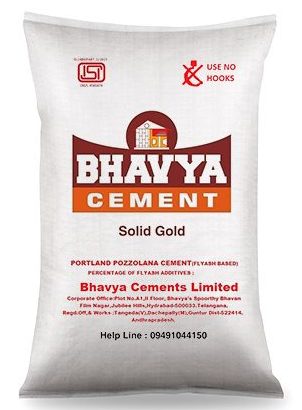Useful for general construction works and especially suitable for works in aggressive environmental conditions, employed for water retaining structures, marine works, mass concreting, such as dams, dykes, retaining walls, foundations, and sewage pipes.
Portland Pozzolana cement utilizes two types of pozzolanas:
a) Fly ash – Covered under IS 1489 (part I) b) Calcined clay -Covered under IS 1489 (part II)
PPC with fly ash, as Pozzolana, is more popular in the country owing to the easy availability of quality fly ash from modern coal based thermal power plants.
Portland Pozzolana cement is manufactured either by inter-grinding Portland cement, Clinker, gypsum and fly ash obtained from thermal power plants, or by intimately blending OPC and fly ash.
The percentage of fly ash in PPC permitted by IS: 1489 varies from 15 per cent (minimum) to 35 percent (maximum).
PPC accounts for nearly 47 per cent of the cement produced in the country
PPC provides improved workability, has less segregation and bleeding, increased water-tightness and reduced tendency of lime to leach out
It produces less heat of hydration and offers greater resistance to the attack of aggressive waters containing sulphates and chlorides.
It improves the durability of structure, and also the strength of concrete over a period of time.
It protects concrete against alkali-aggregate reaction.
The fly ash in PPC helps to improve the impermeability of concrete by converting
Ca(OH)2 into calcium silicate hydrate (C-S-H) gels and make concrete denser. .
PPC is becoming popular in construction industry and its market share is progressively increasing.
PPC can be used with advantage for masonry mortars and plastering.
Indeed it can be used wherever
OPC is usable under normal conditions.
Although in the case PPC the development of strength at initial stages, say up to 7 days, is lower,
PPC progressively improves and not only catches up with OPC in strength but also overtakes it during the life of the concrete. Hence durability is higher.
As per the revised code IS : 456:2000, a minimum curing period of 10 days is prescribed for PPC and for OPC it is 7 days in dry and hot climates.
For improved performance, concrete with PPC calls for sustained curing of at least 14 day




 FLYING STARS
FLYING STARS